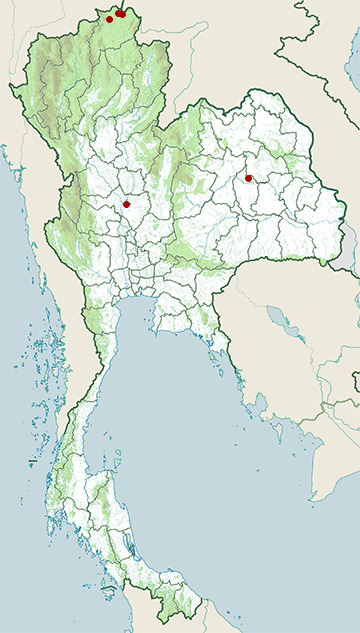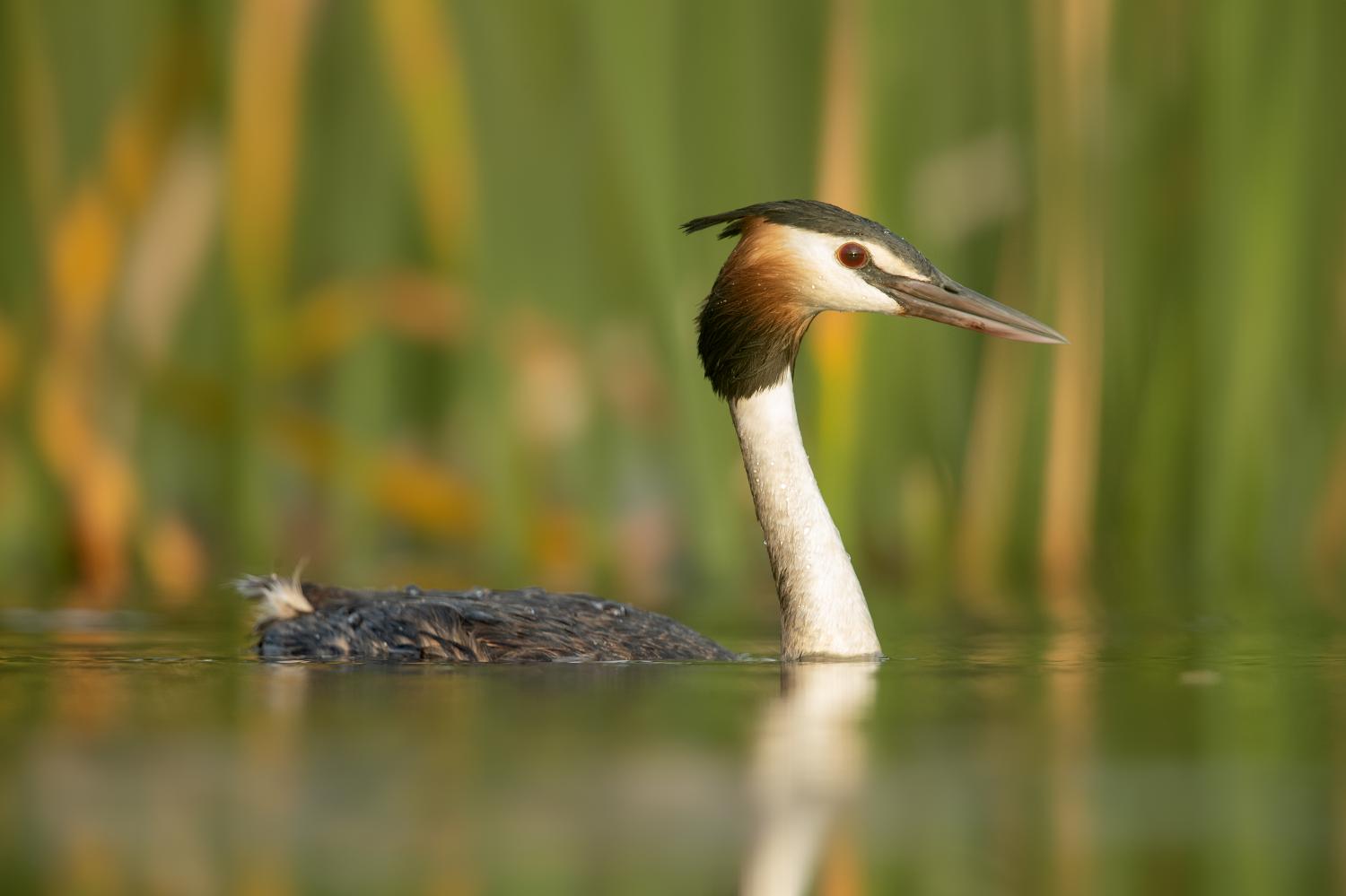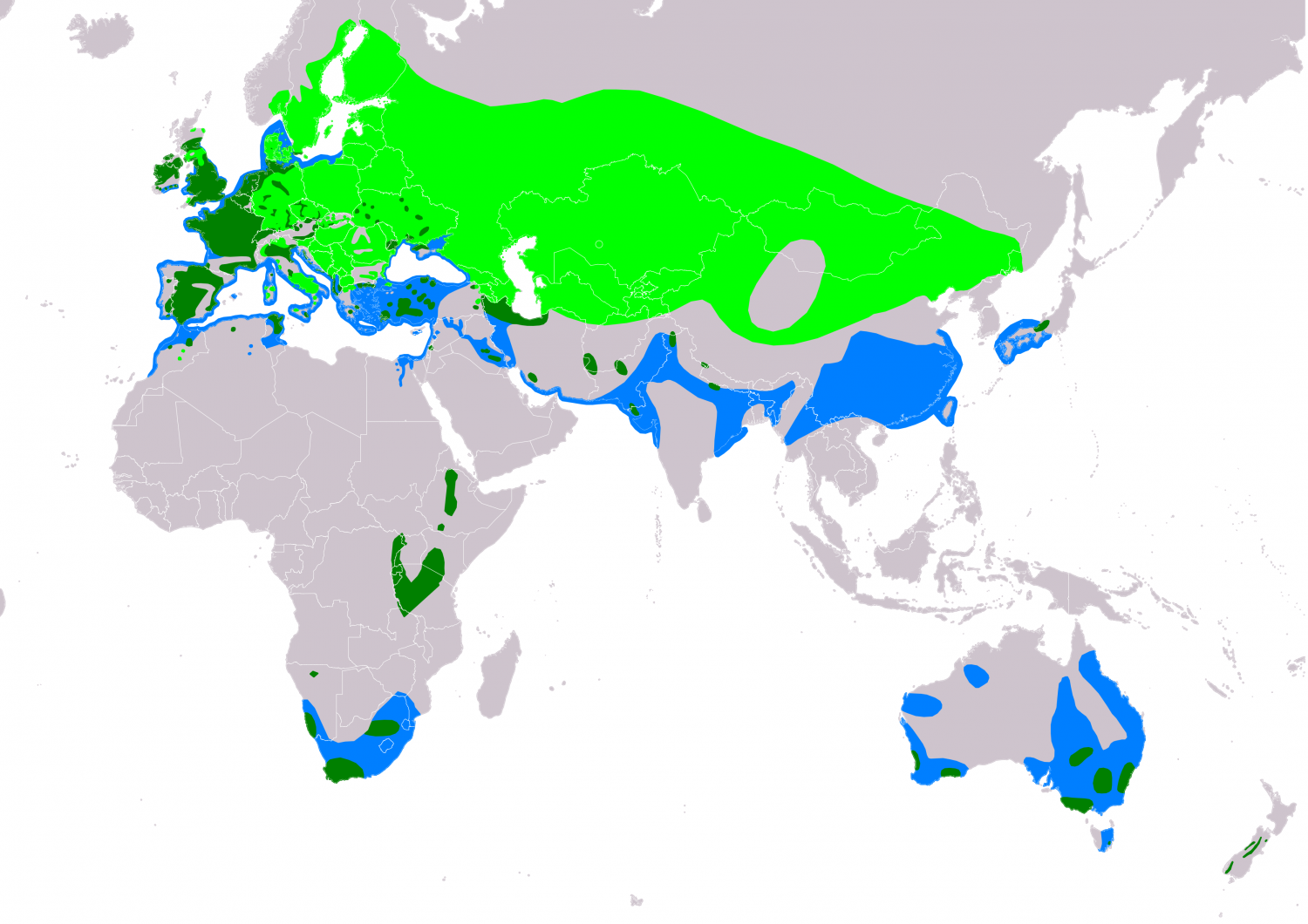Species of Thailand
Great crested grebe
Podiceps cristatus
Carolus Linnaeus, 1758
In Thai: นกเป็ดผีใหญ่
The great crested grebe (Podiceps cristatus) is a member of the grebe family of water birds noted for its elaborate mating display. Its scientific name comes from Latin: the genus name Podiceps is from , "vent" and , "foot", and is a reference to the placement of a grebe's legs towards the rear of its body; the species name, cristatus, means "crested".
Description
The great crested grebe is the largest member of the grebe family found in the Old World, with some larger species residing in the Americas. They measure 46 – 51 cm long with a 59 – 73 cm wingspan and weigh 0.9 to 1.5 kg. It is an excellent swimmer and diver, and pursues its fish prey underwater. The adults are unmistakable in summer with head and neck decorations. In winter, this is whiter than most grebes, with white above the eye, and a pink bill.
The young are distinctive because their heads are striped black and white. They lose these markings when they become adults.
Distribution
The great crested grebe breeds in vegetated areas of freshwater lakes. The subspecies P. c. cristatus is found across Europe and east across the Palearctic. It is resident in the milder west of its range, but migrates from the colder regions. It winters on freshwater lakes and reservoirs or the coast. The African subspecies P. c. infuscatus and the Australasian subspecies P. c. australis are mainly sedentary.
Behaviour
The great crested grebe has an elaborate mating display. Like all grebes, it nests on the water's edge, since its legs are set relatively far back and it is thus unable to walk very well. Usually two eggs are laid, and the fluffy, striped young grebes are often carried on the adult's back. In a clutch of two or more hatchlings, male and female grebes will each identify their 'favourites', which they alone will care for and teach.
Unusually, young grebes are capable of swimming and diving almost at hatching. The adults teach these skills to their young by carrying them on their back and diving, leaving the chicks to float on the surface; they then re-emerge a few feet away so that the chicks may swim back onto them.
The great crested grebe feeds mainly on fish, but also small crustaceans, insects small frogs and newts.
This species was hunted almost to extinction in the United Kingdom in the 19th century for its head plumes, which were used to decorate hats and ladies' undergarments. The Royal Society for the Protection of Birds was set up to help protect this species, which is again a common sight.
The great crested grebe and its behaviour was the subject of one of the landmark publications in avian ethology: Julian Huxley's 1914 paper on The Courtship‐habits of the Great Crested Grebe (Podiceps cristatus).
This article uses material from Wikipedia released under the Creative Commons Attribution-Share-Alike Licence 3.0. Eventual photos shown in this page may or may not be from Wikipedia, please see the license details for photos in photo by-lines.
Category / Seasonal Status
Wiki listed status (concerning Thai population): Very rare winter visitor
BCST Category: Recorded in an apparently wild state within the last 50 years
BCST Seasonal status: Non-breeding visitor
Scientific classification
- Kingdom
- Animalia
- Phylum
- Chordata
- Class
- Aves
- Order
- Podicipediformes
- Family
- Podicipedidae
- Genus
- Podiceps
- Species
- Podiceps cristatus
Common names
- Thai: นกเป็ดผีใหญ่
Conservation status

Least Concern (IUCN3.1)
Photos
Please help us review the bird photos if wrong ones are used. We can be reached via our contact us page.
Range Map

- Bueng Boraped Non-Hunting Area
- Chiang Saen District, Chiang Rai
- Kantharawichai District, Maha Sarakham
- Mae Chan District, Chiang Rai
- Nong Bong Khai Non-Hunting Area




